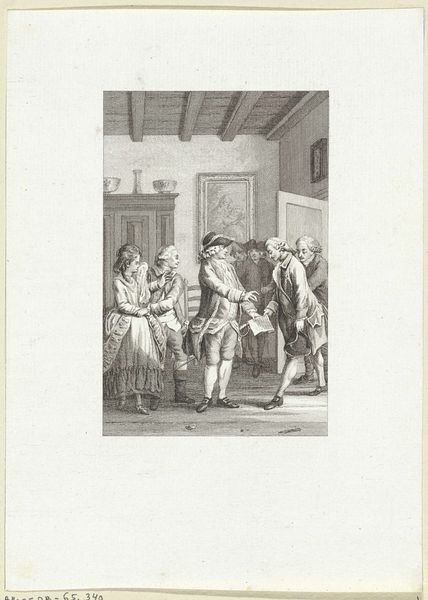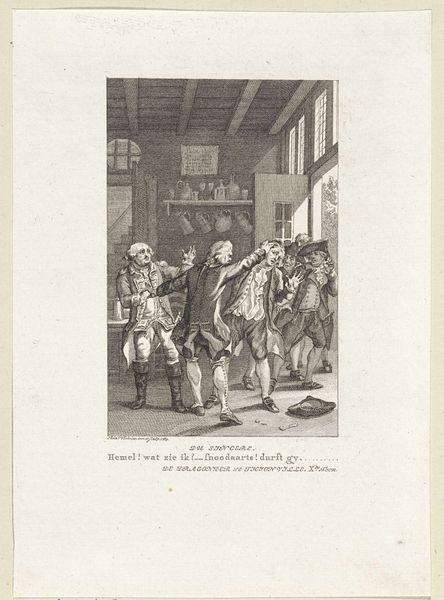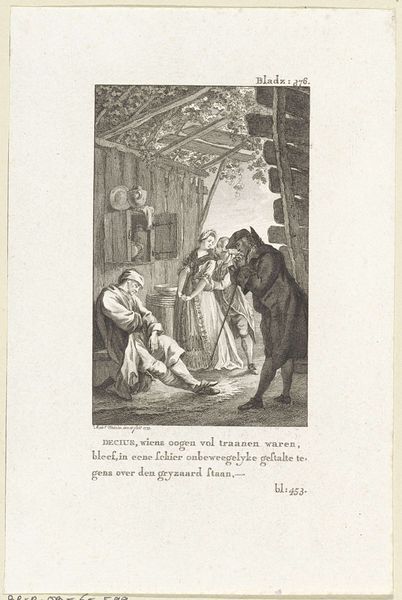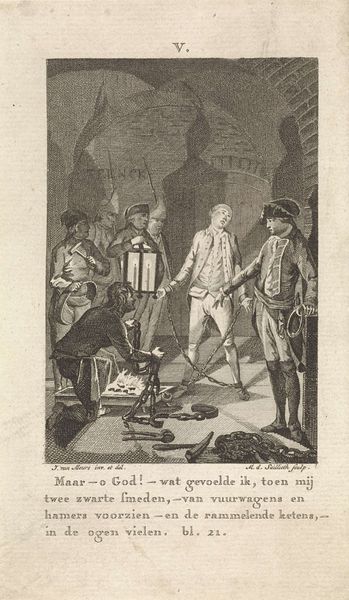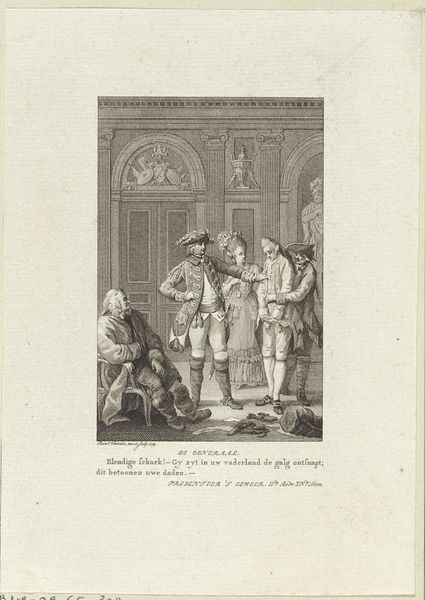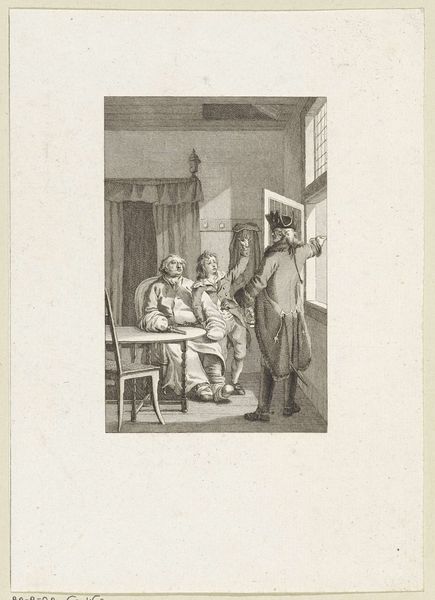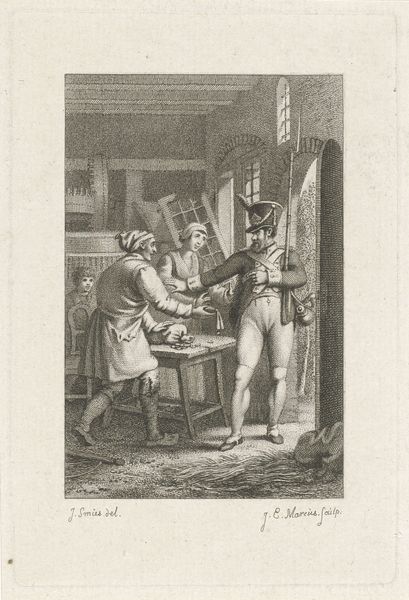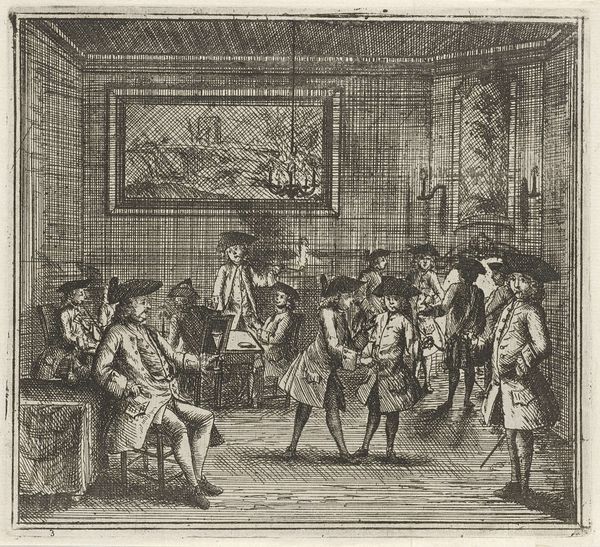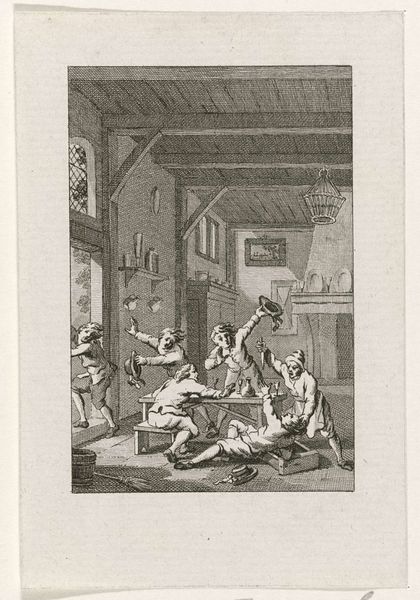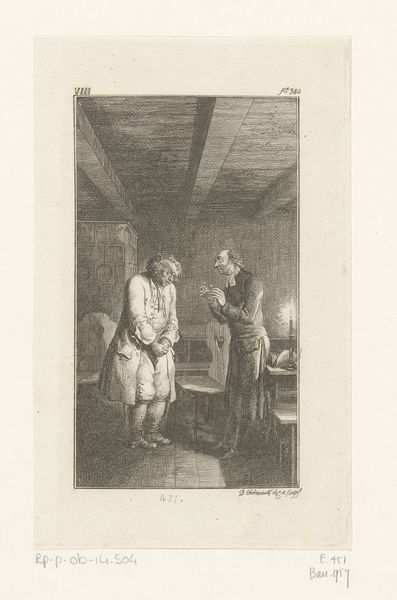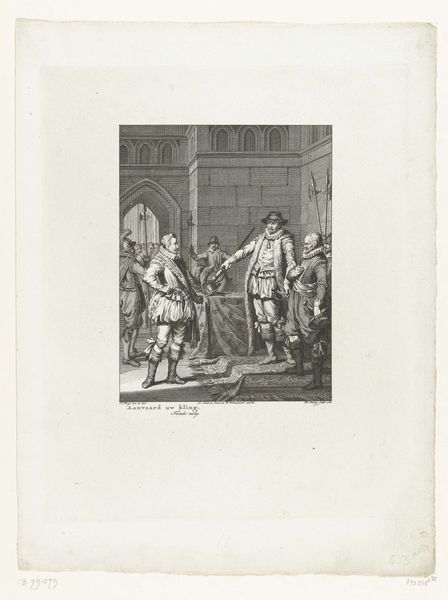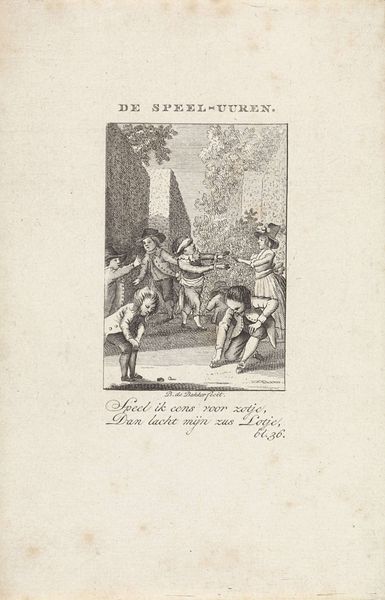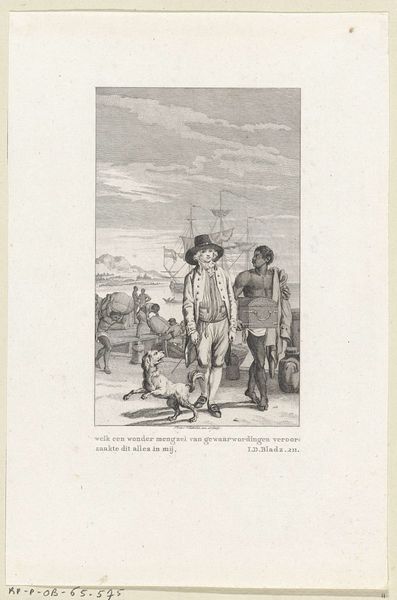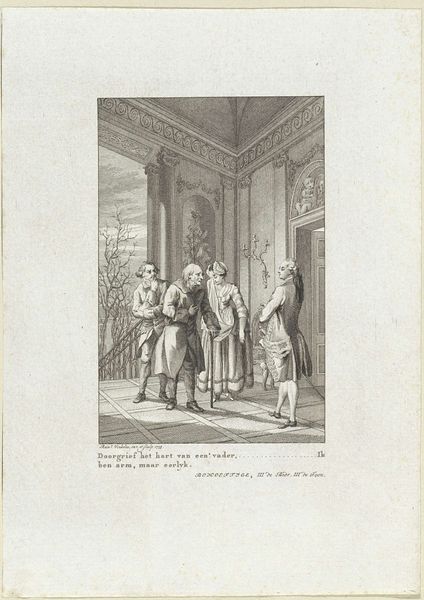
drawing, print, engraving
#
drawing
#
neoclassicism
# print
#
figuration
#
15_18th-century
#
genre-painting
#
history-painting
#
engraving
Dimensions: height 224 mm, width 150 mm
Copyright: Rijks Museum: Open Domain
Curator: Today, we’re observing an engraving from 1790 by Reinier Vinkeles entitled "Vrouw toont haar gebalde vuist aan een andere vrouw," currently housed in the Rijksmuseum. Editor: It's striking, this print—an immediacy, really. All this compressed anger and anxiety focused in that one fist! I am particularly drawn to the social dynamics implied within this composition and the narrative suggested in the interplay of glances and gestures among all the individuals pictured here. Curator: Absolutely, the dynamic tensions created via formal balance! Note how the woman's raised fist—almost centered in the image—draws the viewer’s eye upward toward the placard overhead with the words: DE MINYVRIGE. Editor: Ah, that’s interesting because knowing that, “The Petticoat Government,” now the labor, I mean spinning labor displayed on the one side and domestic control suggested on the other seems very…loaded, I mean culturally constructed as evidence here. I find this fascinating how engraving itself acts as both document and critique—what would we learn by studying how Vinkeles himself organized his workshop? Curator: The use of line is masterful in creating a sense of depth, particularly within the architecture; see how the light filtering from the window falls to emphasize that depth. Note, too, how the stark contrast between the shadowed interior space and brightly lit figures heightens drama, compelling our attention. The lines work as signs, representing gender, class, and narrative, wouldn't you agree? Editor: Yes, and I’d argue the contrast pushes beyond mere formal drama; the means of print production—engraving specifically—lends the scene social context. This was reproducible for wide distribution at a certain price point—I want to know how access influenced both subject and maker. It forces us to consider Vinkeles' own political perspective here... How was this artwork consumed? Curator: A fitting inquiry! This piece allows for such compelling arguments and observations about form. Editor: Exactly and, more broadly, this little engraving lets us reconsider what labour looks like within art history!
Comments
No comments
Be the first to comment and join the conversation on the ultimate creative platform.
